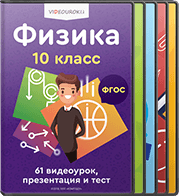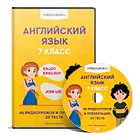| The History Behind 8 Famous Tongue Twisters Tongue twisters have been screwing up speaking abilities around the world for centuries. As entertaining as tripping over tricky terms can be, early English twisters were also used to teach pupils proper speech. In a note to teachers in his 1878 book Practical Elocution, J.W. Shoemaker reminded them of the "higher motive" of these confounding sayings: "To The Teacher—While many of the exercises ... may create amusement in a class, a higher motive than 'Amusement' has prompted their insertion. Practice is here afforded in nearly every form of difficult articulation." Whether it's selling seashells by the seashore or buying Betty Botter's bitter butter, some of these difficult phrases go way back to when elocution was practiced as routinely as multiplication tables. Come along as we untangle the history behind a few familiar phrases. Fittingly, many tongue twister origin stories are just as knotty as the expressions themselves. 1. PETER PIPER Peter Piper picked a peck of pickled peppers;
A peck of pickled peppers Peter Piper picked;
If Peter Piper picked a peck of pickled peppers,
Where's the peck of pickled peppers Peter Piper picked?
Peter and his famous pickled peppers first appeared in print in 1813 in John Harris's Peter Piper's Practical Principles of Plain and Perfect Pronunciation.
But as is the case with many classic tongue twisters, the rhyme itself may have already been in common use by that time (the book offered similarly formatted phrases for each letter of the alphabet, and Peter clearly got top billing).
Several spice enthusiasts have also suggested the Peter in question was based on 18th century French horticulturalist Pierre Poivre, though that connection should probably be taken with a grain of salt (or pepper, in this case).
Much like Mary Anning and her rumored seashore seashells (more on this later), Poivre's ties to the poem, while feasible, aren't necessarily rooted in concrete evidence. Poivre is French for "pepper," Piper was both Latin for "pepper" and a typical British last name, and the man was known for smuggling cloves from the Spice Islands in his day, so the supposed link makes sense. As a renowned gardener, Poivre may very well have pickled peppers with those stolen cloves, but we don’t actually know for sure.
2. HOW MUCH WOOD WOULD A WOODCHUCK CHUCK? How much wood would a woodchuck chuck,
If a woodchuck could chuck wood? While it likely predates her, Vaudeville performer Fay Templeton is credited with putting the woodchucking woodchuck on the map. “How much wood would a woodchuck chuck, if a woodchuck could chuck wood?” was the chorus of a number Templeton sang in 1903 in the Broadway musical The Runaways (not to be confused with the musical Runaways).
Robert Hobart Davis and Theodore F. Morse wrote Templeton’s "Woodchuck Song," and a few years later “Ragtime” Bob Roberts covered it on his 1904 record, boosting its popularity. The tongue-tripping refrain stuck around and even inspired the title of director Werner Herzog’s 1976 documentary "How Much Wood Would a Woodchuck Chuck: Observations on a New Language" about the 13th International World Livestock Auctioneering Championship.
More recently, scholars have focused less on the origin of the phrase and more on the answer to its central question. In 1988, a fish and wildlife technician for the New York Department of Environmental Conservation made national headlines when he posited if a woodchuck could chuck wood (because they actually can’t) it would be able to chuck about 700 pounds of the stuff—but that little detail must not have fit into the linguistic flow of the original rhyme.
3. AND 4. BETTY BOTTER AND TWO TOOTERS Betty Botter bought some butter;
"But," said she, "this butter's bitter!
If I put it in my batter
It will make my batter bitter.
But a bit o' better butter
Will but make my batter better."
Then she bought a bit o’ butter
Better than the bitter butter,
Made her bitter batter better.
So 'twas better Betty Botter
Bought a bit o’ better butter. ** A tutor who tooted the flute
Tried to teach two young tooters to toot.
Said the two to the tutor,
"Is it harder to toot, or
To tutor two tooters to toot?" Both these classic twisters can be traced to poet and novelist Carolyn Wells's writings in the late 1890s. Betty Botter would go on to be included in Mother Goose’s nursery rhymes and both verses can be found in several variations. While we don’t know who or what exactly sparked the characters of Betty or the tutor, we do know Wells was pretty prolific in terms of her writing. Her 1902 book A Nonsense Anthology—another volume of silly linguistic gymnastics—would be her most famous, but she was also behind more than 100 other books, including mysteries and children’s stories. As if her written contributions to the American language weren't enough, Wells was also known for donating her epic collection of Walt Whitman manuscripts and first editions to the Library of Congress.
5. SHE SELLS SEASHELLS She sells seashells on the sea shore.
The shells she sells are seashells, I'm sure.
And if she sells seashells on the sea shore,
Then I'm sure she sells seashore shells. The story behind "She Sells Seashells" has gotten perhaps the most attention in recent years. Legend has it the rhyme is a tribute to 19th century English paleontologist Mary Anning. Anning was an impressive fossil hunter who is thought to have been responsible for scientific achievements from discovering the first articulated plesiosaur to being among the first to identify fossilized poop—though her male contemporaries had a frustrating way of swiping credit from her. Anning is known in scientific circles (Charles Dickens even wrote about his admiration for her after her 1847 death) but the idea that she’s also the muse behind the tongue twister has given the general public a nice way to honor her as well. Of course, as Stephen Winick of the Library of Congress’s American Folklife Center pointed out, we don’t actually have anything that proves the rumored connection between Anning and the tongue twister. Many outlets cited the 1908 Terry Sullivan and Harry Gifford song that includes the phrase in its lyrics as the birth of this particular tongue twister, but Winick found a handful of earlier instances of its use (similar versions were included in Shoemaker’s elocution book and published in an 1898 issue of Werner’s Magazine, for example). The first known suggestion that the verse was related to Anning seems to be a 1977 book Henry De la Beche: Observations on an Observer, though it was only raised as a possibility and there was no source offered for the reference. 6. I SCREAM, YOU SCREAM I scream, you scream,
We all scream for ice cream. Tongues didn't get particularly twisted with this one, but they did get cold. There’s some disagreement on who first came up with this ditty about everyone’s favorite frozen treat. Throughout the 19th century there were many jokes and comments about how similar “ice cream” and “I scream” sound. But in 1905 a company selling ice cream freezers in Lebanon, Pennsylvania, advertised “I Scream, You Scream, We all Scream for Ice Cream! This is certainly Ice Cream Weather. Have you a good Ice Cream Freezer?” While unlikely the first usage of the phrase (something very similar appears in Wisconsin a few months earlier), the rhyme probably became famous thanks to Howard Johnson, Billy Moll, and Robert King, who wrote the phrase into a song of the same name in 1927. Waring’s Pennsylvanians recorded the song, and it became a jazz standard in the '40s. It’s been making people hungry, and haunting ice cream truck drivers, ever since. 7. SUPERCALIFRAGILISTICEXPIALIDOCIOUS Maybe the best-known one-word tongue twister, supercalifragilisticexpialidocious isn't short on complicated back story. Most people associate the mouthful of a nonsense word with Julie Andrews and Dick Van Dyke dancingwith cartoons from the 1964 movie adaptation of P.L. Travers's book series Mary Poppins. But according to songwriters Barney Young and Gloria Parker, they'd used the word first (or a slight variation on it, supercalafajalistickespeealadojus) in their song, which was also known as "The Super Song." So when Disney came out with their song, written by Robert and Richard Sherman, Young and Parker took them to court for copyright infringement. The Shermans claimed they'd learned the funny word at camp as children in the '30s. Young and Parker said Young had made up the word as a kid in 1921 and the pair had sent their song to Disney in 1951. They sued for $12 million. The judge in the ordeal was so flustered by the 14-syllable term in court proceedings, he insisted they refer to it as simply "the word." He ended up throwing out the case, saying the tongue twister had been in common use in New York as far back as the '30s, but the controversy always lingered. Later, another instance of the word being used in 1931, this time spelled supercaliflawjalisticexpialadoshus, was discovered. It had appeared in the Syracuse University student newspaper [PDF], and the writer of the column claimed she'd been the one who made it up, too. 8. PAD KID Pad kid poured curd pulled cod Not yet as recognizable as some other more traditional rhymes, this short sentence was developed by MIT researchers in 2013 as the world’s trickiest twister. The phrase is deceptively harder than something like the "I Scream" song or even the woodchucking woodchuck. As part of the 166th meeting of the Acoustical Society of America, where the facilitators were looking to find how certain speech patterns work psychologically, volunteers were recorded during the project reciting different types of twisters—and Pad Kid caused the most trouble. Because of the phrase's alliteration and words with similar sounds, the brain makes it difficult to repeat quickly without a mistake. Previously, “The sixth sick sheikh's sixth sheep's sick” was often cited as the world’s toughest twister (it even held the Guinness World Record for a time). But as the official category no longer exists, the MIT creation just might take the tongue twister cake.
| Обратная сторона истории 8 скороговорок
Скороговорки разрушают разговорные способности по всему миру на протяжении веков. Хитрые выражения могут быть как забавными, так и сбивающими с толку, ранние английские скороговорки также использовались для обучения учеников чистой речи. В записке для учителей в своей книге 1878 года «Практическая дикция» Дж. У. Шумейкер напомнил им о «высшем мотиве» этих смешанных высказываний: «Для учителя - хотя многие из упражнений ... могут создавать веселье в классе, более высокий мотив, чем «веселье», способствовать их восприятию. Практика здесь предоставляется почти в любой труднопроизносимой форме».
Будь то продажа ракушек у моря или покупка горького масла Бетти Боттер, некоторые из этих трудных фраз уходят в далекое прошлое, когда дикцию практиковали так же регулярно, как и таблицу умножения. Давайте посмотрим, как мы распутываем историю, скрытую за несколькими знакомыми фразами. Как и полагается, многие истории происхождения скороговорок так же запутаны, как и сами выражения. 1. PETER PIPER Peter Piper picked a peck of pickled peppers;
A peck of pickled peppers Peter Piper picked;
If Peter Piper picked a peck of pickled peppers,
Where's the peck of pickled peppers Peter Piper picked?
Питер и его знаменитые маринованные перцы впервые появились в печати в 1813 году в книге Джона Харриса «Практические принципы простого и совершенного произношения Питера Пайпера».
Но, как и в случае со многими классическими скороговорками, сама рифма к тому времени, в общем, возможно, уже использовалась (книга предлагала одинаково отформатированные фразы для каждой буквы алфавита, и Питер очевидно был помещен на первое место).
Некоторые поклонники специй предположили также, что рассматриваемый Питер был основан на французском садоводе 18-го века Пьере Пуавре, хотя эта связь, вероятно, должно быть взята с известной долей скептицизма, т.е. с крупицей соли (или перца, в данном случае).
Подобно Мэри Аннинг и ее, по слухам, морским раковинам (подробнее об этом позже), связь Пуавре со стихотворением, в то же время возможна, но не обязательно основана на конкретных доказательствах. Poivre по-французски означает «перец» и Пайпер также на латыни означало «перец» и типичную британскую фамилию. В свое время этот человек был известен контрабандой гвоздики с Островов пряностей, поэтому предполагаемая связь имеет смысл. Как известный садовник, Пуавре мог очень хорошо мариновать перец с этими украденными гвоздиками, но в настоящее время мы этого не знаем наверняка. 2. HOW MUCH WOOD WOULD A WOODCHUCK CHUCK? How much wood would a woodchuck chuck,
If a woodchuck could chuck wood? Подобно предшествующей скороговорке, исполнителю водевиля Фэю Темплтону приписывают известность деревообрабатывающего сурка. «Сколько дров заготовил бы сурок,Если бы сурок мог пилить дрова?» - это был припев номера, исполненного Тэмплтоном в 1903 году в бродвейской постановке «Беглецы» (не путать с мюзиклом «Беглецы»).
Роберт Хобарт Дэвис и Теодор Ф. Морс написали «Песню сурка» для Темплтона, а спустя несколько лет «Рэгтайм» Боб Робертс записал ее на свою пластинку 1904 года, повысив ее популярность. Скороговорный припев удержался и даже озаглавил документальный фильм 1976 года режиссера Вернера Херцога «How Much Wood Would a Woodchuck Chuck: заметки о новом языке» о 13-м Международном чемпионате по аукциону скота.
Позднее филологи стали уделять меньше внимания происхождению фразы, а больше ответу на ее главный вопрос. В 1988 году специалист по рыбам и диким животным из Департамента охраны окружающей среды Нью-Йорка привлек внимание всех национальных газет, заявив, что если бы сурок мог заготавливать дрова (потому что они на самом деле не могут), то он смог бы заготовить около 700 фунтов сырья, но эта маленькая деталь не должна вписываться в лингвистический поток оригинальной рифмы.
3. AND 4. BETTY BOTTER AND TWO TOOTERS Betty Botter bought some butter;
"But," said she, "this butter's bitter!
If I put it in my batter
It will make my batter bitter.
But a bit o' better butter
Will but make my batter better."
Then she bought a bit o’ butter
Better than the bitter butter,
Made her bitter batter better.
So 'twas better Betty Botter
Bought a bit o’ better butter
** A tutor who tooted the flute
Tried to teach two young tooters to toot.
Said the two to the tutor,
"Is it harder to toot, or
To tutor two tooters to toot?"
Обе эти классические скороговорки можно обнаружить в трудах поэтессы и писательницы Кэролайн Уэллс в конце 1890-х годов. Бетти Боттер будет включена в детские стишки Матери Гусыни, и оба стихотворения можно найти в нескольких вариантах. Хотя мы не знаем, кто или что именно породило персонажей Бетти или учителя, мы ведь знаем, что Уэллс была довольно плодовита в плане письма. Ее книга 1902 года «Антология чепухи» - еще один том глупой лингвистической гимнастики - станет ее самой знаменитой, но она также стояла за более чем 100 другими книгами, включая загадки и детские рассказы. Как будто ее письменных вкладов в американский язык было недостаточно, Уэллс также прославилась тем, что пожертвовала Библиотеке Конгресса свою эпическую коллекцию рукописей Уолта Уитмена и первые издания.
5. SHE SELLS SEASHELLS She sells seashells on the sea shore.
The shells she sells are seashells, I'm sure.
And if she sells seashells on the sea shore,
Then I'm sure she sells seashore shells.
История «Она продает морские ракушки» привлекла, пожалуй, наибольшее внимание в последующие годы. Легенда гласит, что рифма - дань уважения английскому палеонтологу XIX века Мэри Аннинг.
Аннинг был впечатляющим охотником за ископаемыми, которая, как полагают, была ответственна за научные достижения от открытия первого сочлененного плезиозавра, будучи одной из первых, кто идентифицировал окаменелый пах - хотя ее современники мужского пола имели тщетные попытки задеть ее честь. Аннинг известна в научных кругах (Чарльз Диккенс даже писал о своем восхищении ею после ее смерти в 1847 году), но идея о том, что она также является музой скороговорки, дала широкой публике хороший способ почитать ее. Конечно, как отметил Стивен Виник из Американского центра фольклористики при Библиотеке Конгресса, у нас на самом деле нет ничего, что доказывало бы, по слухам, связь между Аннингом и скороговоркой. Многие издания цитировали песню Терри Салливана и Гарри Гиффорда 1908 года, которая содержит фразу о рождении особой скороговорки, но Виник обнаружил несколько более ранних случаев ее использования (например, аналогичные версии были включены в книгу ораторского искусства Шумейкера и опубликованы в журнале Werner's Magazine за 1898 год). Первое известное предположение о том, что этот стих был связан с Аннинг, похоже, было в 1977 году в книге «Генри де ла Беч: наблюдения за наблюдателем», хотя оно было выдвинуто только как предположение, и не был предложен источник для справки.
6. I SCREAM, YOU SCREAM I scream, you scream,
We all scream for ice cream. Эта скороговорка не особо упражняла язычки, но они не остыли.
Есть некоторые разногласия по поводу того, кто впервые придумал эту мелочь о любимом всеми замороженном лакомстве. На протяжении 19-го века было много шуток и комментариев о том, как похоже звучат «мороженое» и «я кричу». Но в 1905 году компания по продаже морозильников для мороженого в Ливане, штат Пенсильвания, объявила: «Я кричу, ты кричишь, мы все кричим, мы мороженое хотим! Это, конечно, погода мороженого. У вас есть хорошая морозильная камера для мороженого? ». Хотя вряд ли это первое употребление фразы (что-то очень похожее появляется в Висконсине несколькими месяцами ранее), рифма, вероятно, стала известной благодаря Говарду Джонсону, Билли Моллу и Роберту Кингу, которые написали фразу в одноименной песне в 1927 году. Группа «Waring’s Pennsylvanians» записала песню, и та стала стандартом джаза в 40-х. С тех пор она делает людей голодными и преследует водителей грузовиков с мороженым. 7. SUPERCALIFRAGILISTICEXPIALIDOCIOUS
Возможно, самая известная скороговорка из одного слова, supercalifragilisticexpialidocious, не является отрывком непростого прошлого. Большинство людей связывают полный набор бессмысленных слов с Джули Эндрюс и Диком Ван Дайком, танцующими с мультяшками из киноверсии 1964 года книжной серии П.Л. Трэверс Мэри Поппинс.
Но, по словам авторов песен Барни Янга и Глории Паркер, они впервые использовали слово (или его слегка измененную версию, supercalafajalistickespeealadojus) в своей песне, которая также была известна как «Супер песня». Поэтому, когда Дисней выпустил свою песню, написанную Робертом и Ричардом Шерманом, Янг и Паркер вызвали их в суд за нарушение авторских прав. Шерманы утверждали, что они выучили смешное слово, когда были детьми в лагере в 30-е годы. Янг и Паркер сказали, что Янг придумал это слово ребенком в 1921 году, а пара отправила свою песню Диснею в 1951 году. Они предъявили иск на 12 миллионов долларов.
Судья в результате тяжкого испытания был настолько взволнован 14-слоговым термином в судебном разбирательстве, что он настоял, чтобы они называли его просто «словом». Он закончил тем, что выбросил это дело, сказав, что скороговорка использовалась в Нью-Йорке еще в 30-х годах, но спор всегда тянулся. Позже был обнаружен другой пример использования слова в 1931 году, на этот раз записанного как supercaliflawjalisticexpialadoshus. Оно появилось в студенческой газете Сиракузского университета, и автор колонки также заявила, что именно она была той, кто ее придумал. 8. PAD KID Pad kid poured curd pulled cod Пока не такое узнаваемое, как другие, более традиционные рифмы, это короткое предложение было разработано исследователями Массачусетского технологического института в 2013 году как самая сложная скороговорка в мире. Фраза обманчиво сложнее, чем что-то вроде «Я кричу» или даже сурка.
В ходе 166-го собрания Акустического общества Америки, где фасилитаторы пытались выяснить, как определенные речевые шаблоны работают психологически, волонтеры, записанные во время проекта, рассказывали разные типы скороговорок, и Пад Кид оказался самым проблематичным. Из-за аллитерации фразы и слов с похожими звуками мозг затрудняет быстрое повторение без ошибки.
Раньше «шестая овца шестого больного шейха больна» часто цитировалась как самая трудная в мире (какое-то время она даже удерживалась в Книге рекордов Гиннеса). Но так как официальной категории больше не существует, творение Массачусетского технологического института не исключает возможности победить в конкурсе скороговорок.
|



























